With a plethora of benefits, these Trees that Start with F are more than the green sentinels decking up your garden!
Houseplants and flowers might grab the spotlight for their beauty and fragrance, but trees are the unsung heroes, quietly supporting life in countless ways. If you’re a tree lover, this list of trees that start with ‘F’ will surely heighten your appreciation for these overlooked giants of nature.
Trees That Start With F
1. Firs
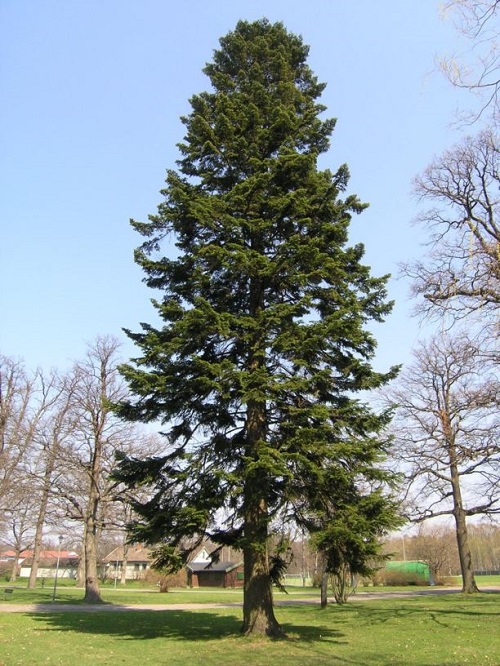
Botanical Name: Abies spp.
Firs are tall, evergreen trees known for their sharp needles and classic conical shape. They’re a favorite during the holiday season as Christmas trees, thriving best in cold climates. Their dense foliage not only adds beauty but also serves practical purposes like creating windbreaks and privacy screens. The wood from fir trees is also valued in construction and papermaking.
2. Fig Tree

Botanical Name: Ficus carica
Fig trees are well-loved for their delicious fruits and large, lobed leaves. Beyond providing sweet figs, the leaves are used in cooking for their unique flavor. These trees are great for home gardens, offering natural shade with their broad canopy. They thrive in warm climates and are relatively drought-tolerant, making them a sustainable choice for many gardens.
3. Flowering Dogwood
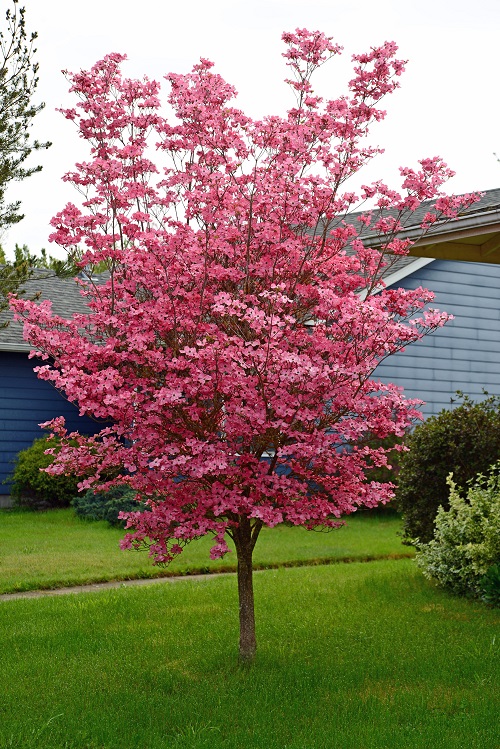
Botanical Name: Cornus florida
he tree provides year-round interest with vibrant fall foliage and red berries that attract birds. Its hard, durable wood is used in making tool handles and small crafts. This tree adapts well to various soil conditions, making it a versatile addition to gardens and parks.
4. Fringe Tree

Botanical Name: Chionanthus spp.
The Fringe Tree stands out with its delicate, white, fringe-like flowers that bloom in late spring to early summer. These flowers add an elegant touch to gardens. Besides its aesthetic appeal, the Fringe Tree is valued in traditional medicine for its liver-cleansing properties.
5. Firethorn Tree
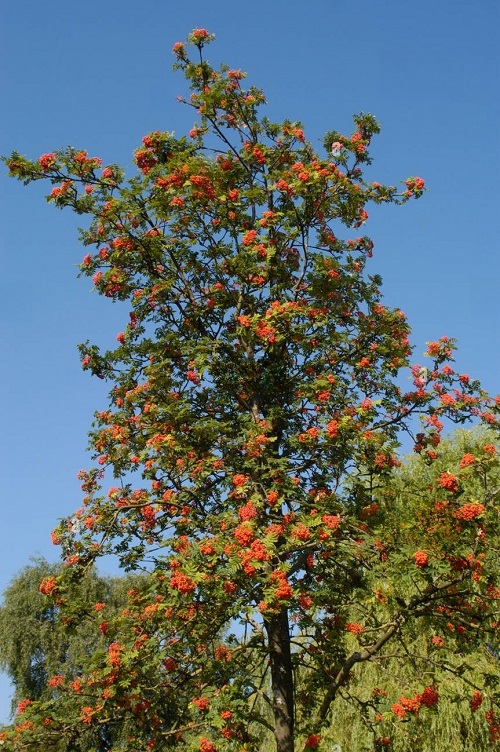
Botanical Name: Pyracantha spp.
These berries provide winter color and food for birds, while the thorny growth makes Firethorn an effective natural barrier or hedge. It’s low-maintenance and wildlife-friendly, making it a practical plant.
6. Frostbite Birch

Botanical Name: Betula ‘Frostbite’
Frostbite Birch is a resilient tree perfect for cold climates. This tree provides year-round interest with its peeling bark and yellow fall leaves.
7. Forest Pansy Redbud
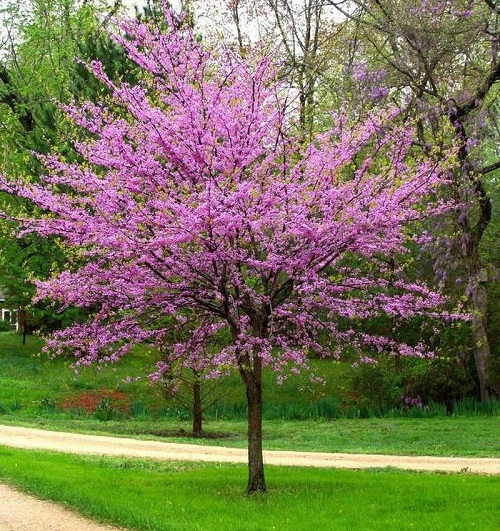
Botanical Name: Cercis canadensis ‘Forest Pansy’
This small tree with heart-shaped leaves change color throughout the seasons, from purple to red to bronze. In early spring, it bursts with bright purple-pink flowers before the leaves appear. It’s great for small gardens and attracts pollinators like bees and butterflies.
8. Flame Maple
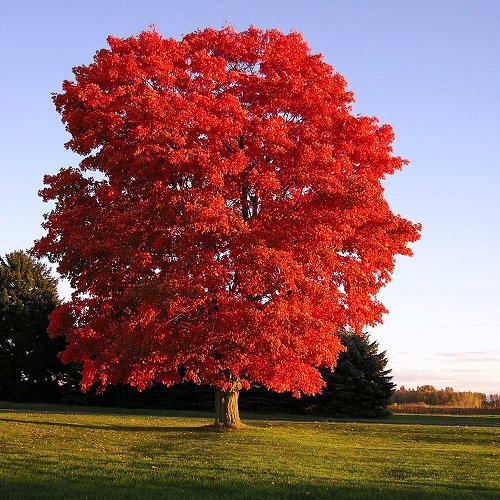
Botanical Name: Acer ginnala
Flame Maple is known for its brilliant red and orange leaves in the fall, making it a fantastic choice for adding autumn color to gardens. This small tree also provides wood used in furniture and musical instruments.
9. False Cypress

Botanical Name: Chamaecyparis spp.
Gardeners adore the False Cypress for its lush, ornamental foliage, making it a top pick for landscaping and hedges. Its rot-resistant wood is a go-to for outdoor projects like decking and fencing.
10. Flooded Gum
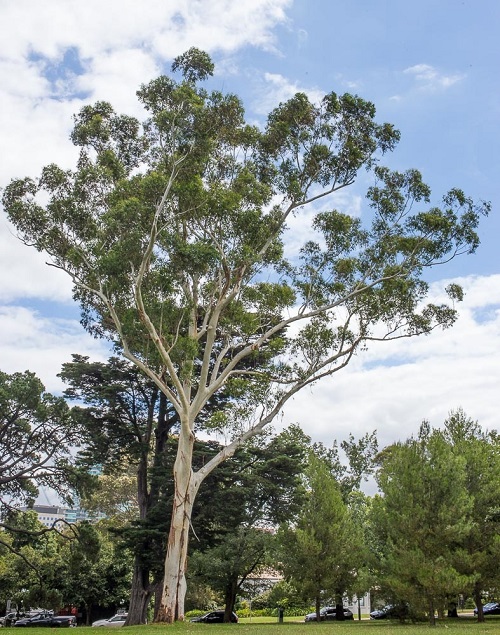
Botanical Name: Eucalyptus grandis
Due to its exceptional strength and durability, its timber is highly sought after for construction and furniture. This eucalyptus species can grow very tall, making it a prominent feature in landscapes where it helps with soil stabilization and provides valuable timber.
11. Fern Tree

Botanical Name: Jacaranda mimosifolia
Despite its name, the Fern Tree, or Jacaranda, is famous for its stunning purple-blue flowers that create a spectacular display when in bloom. It’s a popular choice in urban landscapes and gardens for its aesthetic appeal and the beautiful shade it provides.
12. Flamboyant Tree

Botanical Name: Delonix regia
Living up to its name, the Flamboyant Tree features fiery red and orange blossoms. A native of Madagascar, this stunning beauty grows best in warmer regions, flaunting its broad, shade-providing canopy.
13. Franklin Tree

Botanical Name: Franklinia alatamaha
The Franklin Tree is a rare deciduous tree native to the southeastern United States. It is cherished for its fragrant white flowers and dark green foliage, making it a common sight in public gardens. Its rarity and historical significance, coupled with its beautiful blooms, make it a prized addition to any botanical collection.
14. Fragrant Olive

Botanical Name: Osmanthus fragrans
The Fragrant Olive is a small evergreen tree known for its intensely fragrant flowers, which add a delightful aroma to gardens. The flowers are also a staple in traditional Chinese tea making, where they infuse tea with a unique, sweet fragrance. This tree is valued for both its sensory appeal and its culinary uses.
15. Fremont Cottonwood

Botanical Name: Populus fremontii
A native North American giant, the Fremont Cottonwood thrives near water sources. With heart-shaped leaves and fluffy, cotton-like seeds, this tree is a natural choice for riparian landscapes.
16. Flat-Top Crabapple

Botanical Name: Malus ‘Flat-Top’
Perfect for smaller spaces, the Flat-Top Crabapple sports a compact shape and beautiful springtime show of pink or white flowers. It’s a favorite among gardeners for adding a splash of color and charm to compact gardens.
17. Florida Maple

Botanical Name: Acer saccharum subsp. floridanum
This southeastern U.S. native stands out with its yellow-to-deep-red autumn leaves. Not just a visual treat, the Florida maple is a wildlife haven, providing food and shelter for various species.
18. Fern-Leaf Beech

Botanical Name: Fagus sylvatica ‘Asplenifolia’
Elegant with its fern-like, deeply lobed leaves, this European beech cultivar is a garden’s pride, bringing a sophisticated air to parks and large landscapes.
19. Fiddlewood Tree

Botanical Name: Citharexylum spinosum
With its glossy leaves and fragrant white flowers, these Trees that Start with F are a gem in ornamental gardens, often attracting birds and butterflies.
20. Florida Torreya

Botanical Name: Torreya taxifolia
A rare and endangered conifer from Florida and Georgia, this tree sports dense, yew-like foliage and distinctively sharp needles. Conservationists highly value it for its rarity and unique characteristics.
21. Fern Pine

Botanical Name: Afrocarpus gracilior
This evergreen is admired for its feathery, fern-like foliage, ideal for ornamental use or as a lush, green hedge in subtropical climates.
22. Furrowed Bark Cherry

Botanical Name: Prunus serrula
This tree stands out with its striking, shiny, mahogany-colored bark, which peels in bands. It’s prized for both its ornamental bark and the beautiful clusters of small white flowers that bloom in spring.
23. Flowering Ash

Botanical Name: Fraxinus ornus
The flowering ash is a popular ornamental tree celebrated for its fragrant white flowers that bloom in spring. Its distinctive winged seeds add an extra layer of interest to the landscape.
24. False Mastic

Botanical Name: Sideroxylon spp.
Popular as a bully tree, this group of evergreen trees stands out with its robust, dense foliage. It is a common sight in tropical and subtropical regions, often used for its wood and as an ornamental tree.
25. Fernleaf Japanese Maple

Botanical Name: Acer japonicum ‘Aconitifolium’
This ornamental tree is a garden favorite, thanks to its finely divided, fern-like leaves and stunning fall color. With a compact size, it is ideal for smaller gardens or for group planting in larger landscapes.
26. Fruitless Mulberry

Botanical Name: Morus alba ‘Fruitless’
The Fruitless Mulberry is a great option if you want a lush, green tree without the hassle of berries. This tree can reach up to 30-60 feet tall and wide, providing ample coverage and a cool, shaded area. Its dense leaves also help reduce noise and offer a habitat for birds.
27. Feijoa Tree

Botanical Name: Acca sellowiana
Also known as the pineapple guava, the Feijoa Tree is both beautiful and productive. In spring, it blooms with lovely white and red flowers, and by fall, it bears sweet, aromatic fruits. The tree typically grows up to 10-15 feet tall and is drought-tolerant, making it a great choice for hedges or standalone garden features.
28. Fuzzy Kowhai

Botanical Name: Sophora microphylla
The Fuzzy Kowhai is a native of New Zealand, known for its bright yellow flowers that attract birds like the native Tui. Blooming in spring, it symbolizes the season and is loved for its natural beauty and ecological importance. This tree can grow up to 26 feet tall and adds vibrant color to any garden.
29. Fujian Cypress

Botanical Name: Fokienia hodginsii
The Fujian Cypress is a rare and fragrant conifer. Its aromatic wood is valued in traditional crafts and furniture making. The tree’s pleasant-smelling foliage makes it a popular choice for private gardens. Growing slowly, it can reach heights of 65-100 feet, making it a long-term addition to any landscape.
30. Forest Acacia

Botanical Name: Acacia melanoxylon
Known as Blackwood, the Forest Acacia is a tall, fast-growing tree prized for its hard, durable wood, often used in furniture and cabinetry. It can grow up to 100 feet tall and is also used in reforestation projects and as a windbreak due to its ability to improve soil quality through nitrogen fixation.
31. Firewheel Tree

Botanical Name: Stenocarpus sinuatus
The Firewheel Tree is named for its spectacular red, wheel-shaped flowers that bloom in summer and autumn. These bright flowers attract pollinators like bees and birds. The tree can grow up to 100 feet tall and adds a stunning visual element to gardens and parks.
32. Frosty Pink Chinese Fringe Tree

Botanical Name: Chionanthus retusus ‘Frosty Pink’
This ornamental tree blooms with frosty pink flowers in the spring, offering a soft and delicate alternative to the traditional white fringe tree. It can grow up to 20-30 feet tall and is perfect for adding a unique touch to gardens and landscapes with its pastel-colored blooms.
33. Foxglove Tree
Botanical Name: Paulownia tomentosa
The Foxglove Tree is a rapid grower that produces purple foxglove-like flowers. Its wood is lightweight yet strong, often used in making musical instruments and fine furniture.
34. False Acacia

Botanical Name: Robinia pseudoacacia
Popular as Black Locust, this tree is prized for its durable, rot-resistant wood, ideal for outdoor furniture and fencing. In spring, it boasts clusters of fragrant white flowers, adding beauty to its surroundings.
35. Flame Tree
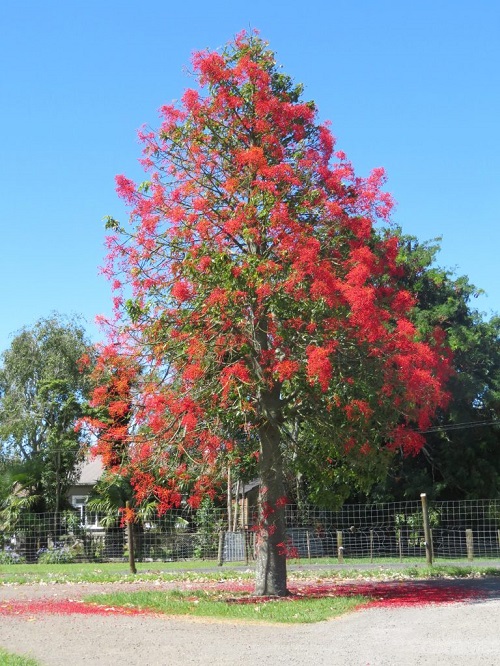
Botanical Name: Brachychiton acerifolius
Native to Australia, the Flame Tree produces fiery red flowers that cover the tree when it’s leafless. It’s a popular ornamental tree in warm climates, loved for its dramatic flowering.
36. Fringe Myrtle
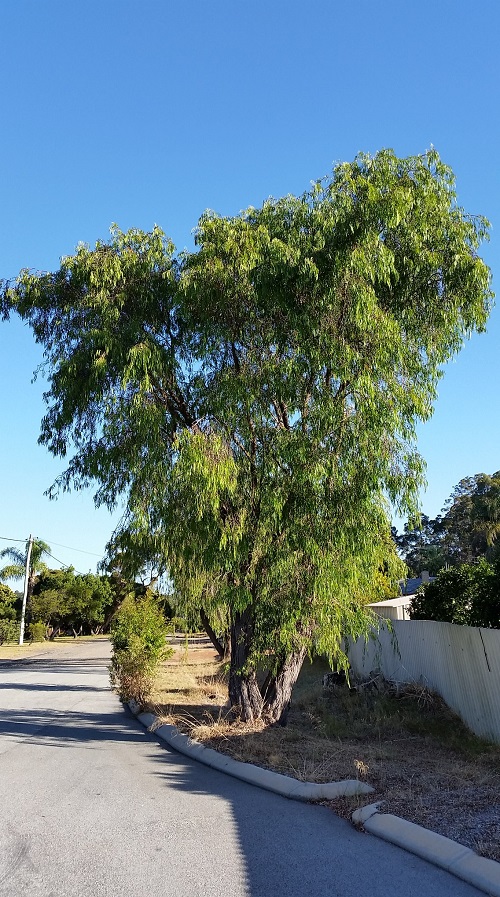
Botanical Name: Agonis flexuosa
The Fringe Myrtle, native to Australia, is known for its weeping branches and peppermint-scented leaves. It blooms with small white flowers in the spring and typically grows up to 30 feet tall. Its unique foliage and aromatic properties make it a popular choice for landscaping and garden design.







